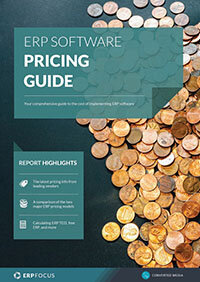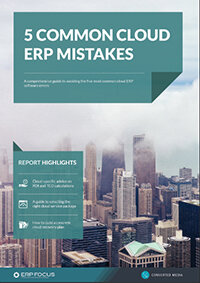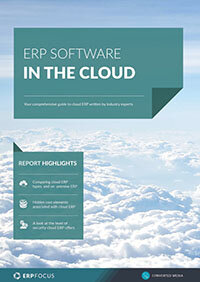10 Cloud ERP Definitions You Need to Understand
Terms and acronyms are always useful, particularly when an ERP manager is trying to figure out what the IT folks are talking about in the context of cloud computing and how it may add or detract from their operations. Consequently, we thought we would put some of the more obvious bits of information together just to serve as a short cloud management primer.
Cloud Infrastructure
A cloud infrastructure is an internet-based computing environment in which large groups of remotely activated servers interrelate to create a homogenous network utilizing data storage, and online service resources. Cloud systems are typically sub-categorized as being public, private or hybrid
.
Public Cloud System
This category offers access to operational tenets across a public server network, typically operating across a singular commercial subscriber platform. Under this topology there are typically three sub-groups as described below, with each group offers a different level of activity. Upside: rapid mounting and execution of operations. Downside: Security concerns can potentially become problematic.
SaaS – Software as a System - SaaS is a software licensing and delivery model in which software is licensed on a subscription basis and is centrally hosted.
PaaS – Platform as a System - PasS is a category of cloud computing services that provides a computing platform and a solution stack as a service
.
IaaS – Infrastructure as a System – IaaS is a provisioning model in which an organization outsources the equipment used to support operations, including storage, hardware, servers and networking components.
Private Cloud System
This category offers only in/outbound access via an enterprise’s proprietary cloud-based infrastructure. In this case a typical enterprise IT group acts as the cloud provider, and is responsible for holistic management of the infrastructure, and any primary and/or subordinate sub-elements. Upside: Total enterprise control. Downside: Total enterprise control costs more money.
Hybrid Cloud System
This category represents a middle-ground approach to Cloud ERP operations. In this case, the topology offers what may relate as the ‘best of both worlds,’ where critical or sensitive elements operate across a Private Cloud, while non-critical, or irregular operations operate across one or more Public Cloud platforms. Upside: Rapid initiation and execution at a middle-of-the-road price point. Downside: flexibility can be somewhat frangible over time, as active enterprise operations produce more stress on daily requirements.
SLA
The Service Level Agreement (SLA) governs business, operating terms and technical activities between an enterprise and a computing and/or telecommunications provider. This document is sometimes colloquially referred to as the ‘fine print.” The agreement binds both parties, and as such is relevant to the health and quality of an overall business relationship. Some SLA elements include guaranteed up and downtime, quality of service (QoS), data rates and available bandwidth, datastore stability, and provider security.
Cloud Service Levels
This term refers to any subordinate tier within an overall cloud infrastructure including integrated clusters of software, utility and/or affiliate systems. Some levels include integrated/standalone and remotely-hosted operational modules, i.e. CRM, Finance, BI, Inventory, Manufacturing etc, utility systems such as security, or other monitor-related sub-applications.
Data Center
A large group of networked computer servers typically utilized by an enterprise to support remote systems execution, interrelated storage management, affiliate in/outbound data processing, and the receipt, distribution and/or delivery of large densities of raw data, and/or filtered information.
Virtualization
The graphical representation of an overall and/or cloud-based topology including all tiers, systems, utilities and affiliate middleware applications, in addition to actively dependent hardware elements and components.
Cloud-based Web Services
Web Services refer to support systems and human resources that offer one or more operational value-adds. Some of these values include; integration development, custom systems development, developer enhanced functionality, applications feature extension, and database optimization.
So there you go, I hope this little primer will make managers feel a bit better regarding the general tenets and value points of cloud systems.
Free white paper

ERP Software Pricing Guide
Get the latest pricing information on over 80 popular ERP systems, and learn how to budget for your ERP project in our free guide

Featured white papers
-

Five common cloud ERP mistakes
Get your comprehensive guide to avoiding the five most common cloud ERP errors
Download -

Related articles
-

Why you shouldn't underestimate cloud ERP consultant costs
Make sure to take the cost of a consultant into account when planning your cloud ERP budget
-

Secret KPI: Why Your ERP Implementation Team Matters More Than Software
Learn how Godlan ensures successful ERP implementation for manufacturers with proven strategies &...
-

Cloud ERP vs on-premise ERP: an objective comparison
Are you choosing between cloud ERP and on-premise ERP? This balanced guide will help

